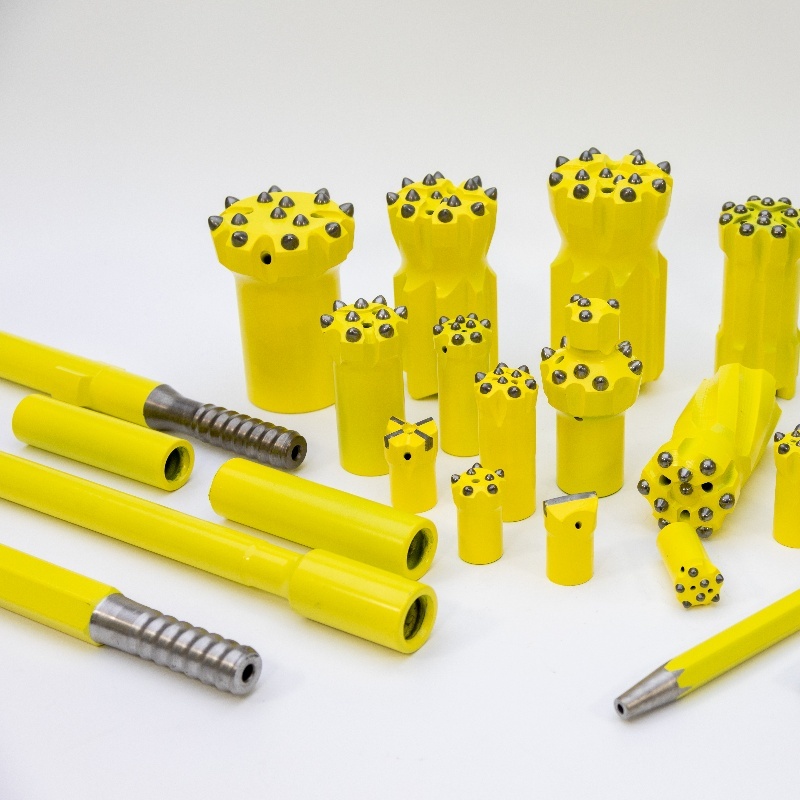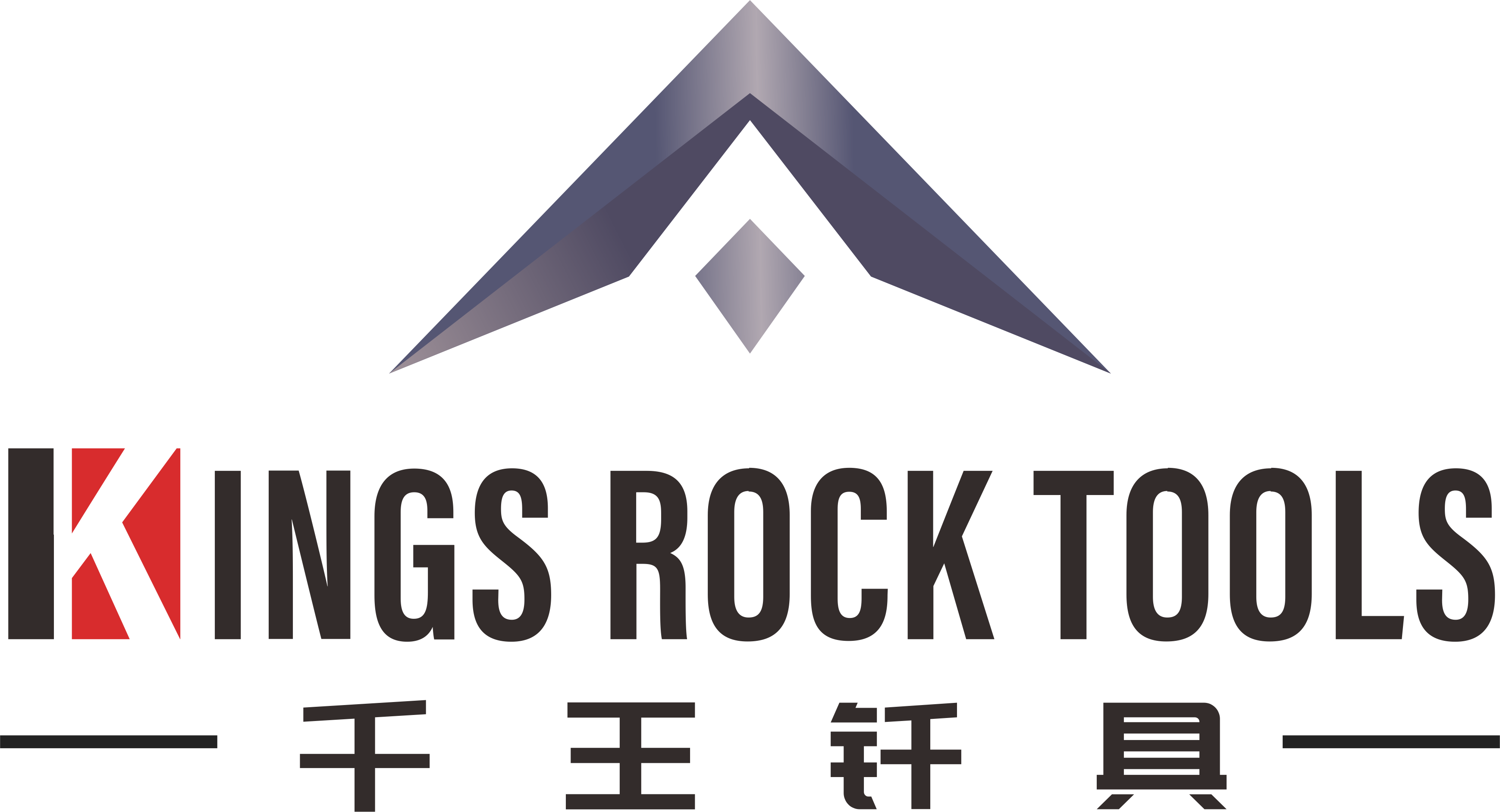Welcome to Kings Rock Tools - Home of the Rock Drilling Tools!
Guide on the proper use of mine drill rod
Release time:
Jan 06,2025
Source:
The correct use of drill rod is the key to ensure efficient and safe drilling operations. Here is a detailed guide on the proper use of mine drill rod,covering everything from selection to maintenance:

1. Select the right drill rod
Selection according to geological conditions: Different geological conditions have different requirements . Hard rock formations require high strength and wear resistant , while soft or gravel formations may require more flexible drill rod. Ensure that the drill rod is selected for the specific geological conditions to increase drilling efficiency and extend service life.
Consider the depth and diameter of the hole: The depth and diameter of the hole determine the length and outside diameter of the drill rod required. Ensure that the drill rod selected can meet the drilling requirements, while avoiding too long or too short drill rod affecting the operation.
Inspection standards and certification: Select drill rod that complies with international standards (such as API, ISO, etc.) to ensure its quality and safety. Especially for deep drilling or high corrosion environments, it is recommended to select specially treated corrosion resistant.
2. Install and connect
Clean the threads: Before each connection, be sure to clean the threads to ensure that there is no dust, mud, or other debris. Dirt may cause thread damage and affect the tightness of the connection.
Use the appropriate lubricant: Applying the right amount of special grease to the threads can reduce friction, prevent thread wear, and ensure a strong connection. But be careful not to apply too much, so as not to affect the bite of the thread.
Uniform tightening: Use a torque wrench to tighten the threaded connection evenly according to the manufacturer's recommended torque value to avoid over-tightening or undertightening. Over-tightening may result in thread damage, while not tightening tightly enough may cause loosening or leakage.
Check the quality of the connection: After each connection, carefully check that the threads are fully occluded to ensure that there is no loosening or misalignment. If any anomalies are found, reconnect or replace the faulty drill rod immediately.
3. Operation and use
Control drilling speed: According to geological conditions and drill rod performance, reasonable control drilling speed. Too fast a drilling rate can cause the drill rod to overheat, wear, and even break. Especially in hard rock formations, the drilling speed should be properly reduced to ensure the stability and safety of the drill rod.
Keep the drill rod vertical: During the drilling process, try to keep vertical and avoid tilting or bending. Inclined drill rod will not only affect the accuracy of drilling, but also increase the wear of drill rod and shorten its service life.
Check the status of the drill rod regularly: During drilling, check the status regularly, especially if the thread connection is loose, worn or damaged. When problems are found, stop the machine in time to check and take appropriate measures.
Avoid overloading: Do not expose drill rod to pressure or torque exceeding its designed load. Overload can lead to drill rod deformation, fracture or thread damage, which seriously affects the safety and efficiency of drilling operations.
4. Maintenance and maintenance
Cleaning and drying: After each use, thoroughly clean the drill rod surface and threads to remove dirt, mud, and other impurities. After cleaning, ensure that the drill rod is completely dry to avoid corrosion caused by moisture residue.
Check thread regularly: Check thread wear regularly, especially for frequently used drill rod. If the thread is found to have obvious wear or damage, it should be replaced or repaired in time.
Anti-corrosion treatment: For drill rod stored for a long time or used in a highly corrosive environment, it is recommended to perform anti-corrosion treatment, such as coating anti-rust oil or using anti-corrosion coating to prevent rust or corrosion.
Proper storage: When storing drill rod, it should be laid flat or suspended on a special support to avoid stacking or pressure. Store in a dry, well-ventilated environment away from chemicals and corrosive substances.
Record the use: Establish a use file for each drill rod, record its use times, drilling depth, geological conditions and other information. This helps to track the useful life of the drill rod and to maintain or replace it in a timely manner.
5. Common problems and solutions
Thread damage: Thread damage is usually caused by improper connection or excessive tightening. The solution is to use a torque wrench to tighten the thread according to the recommended torque value and check the thread status regularly.
Drill rod bending: Drill rod bending can be caused by drilling too fast, drill rod not vertical, or complex geological conditions. The solution is to adjust the drilling speed, keep the drill rod vertical, and select the appropriate drill rod type.
Drill rod breakage: Drill rod breakage is usually caused by excessive use or thread damage. The solution is to avoid overloading, check the thread status regularly, and replace the faulty drill rod in a timely manner.
Drill rod corrosion: Drill rod corrosion is usually caused by prolonged exposure to moisture or by not being treated with corrosion protection. The solution is to regularly clean and dry the drill rod, and carry out anti-corrosion treatment.
6. Safety precautions
Wear personal protective equipment: When operating drill rod, be sure to wear appropriate personal protective equipment such as safety helmet, goggles and gloves to ensure your own safety.
Compliance with operating procedures: Drilling operations are carried out in strict accordance with the operating procedures of the equipment to avoid illegal operations and ensure the safety and stability of the drilling process.
Regular training of operators: Ensure that all operators have received professional training, familiar with the use of drill rod and maintenance requirements, and can operate and maintain the equipment correctly.
Sum up
The correct use of drill rod can not only improve the drilling efficiency, but also extend the service life of drill rod to ensure the safety and reliability of operation. By selecting the right drill rod, proper installation and operation, regular maintenance and safety precautions, you can maximize the performance of the drill rod and successfully complete every drilling mission.
Key words:
Related News



